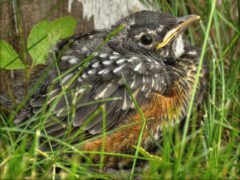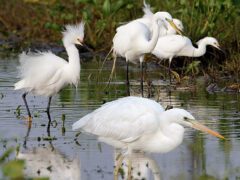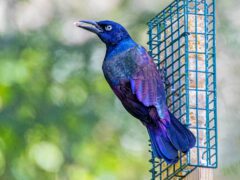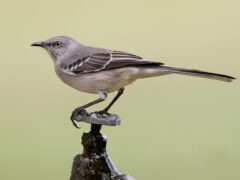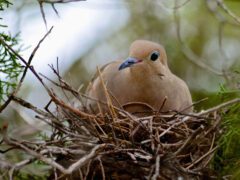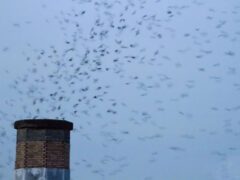The Four Keys to ID
- Size & Shape
Least Flycatchers are the smallest Empidonax flycatcher in the East. Like other flycatchers they tend to perch upright, but they appear a little more compact than most. The primary feathers on their wings are short, which makes their thin tail look longer. Their head is round and is not peaked at the back of the head like some other Empidonax.
Relative Size
Larger than a Blue-gray Gnatcatcher, smaller than an Eastern Wood-Pewee.

 sparrow-sized or smaller
sparrow-sized or smallerMeasurements
- Both Sexes
- Length: 4.7-5.5 in (12-14 cm)
- Weight: 0.3-0.5 oz (8-13 g)
- Wingspan: 7.9 in (20 cm)
© Alix d'Entremont / Macaulay Library
- Color Pattern
Least Flycatchers are grayish olive above with a dusky breast. Their head is grayish olive as well with a bold white eyering. They have a very faint yellow wash to the belly and 2 white wingbars.
© Jeremiah Trimble / Macaulay Library - Behavior
Least Flycatchers congregate in clusters in deciduous forests during the breeding season. They sing incessantly throughout the summer, tossing their head back with each chebec. They tend to flit from perch to perch among dead branches in the middle to upper level of the forest canopy.
- Habitat
Least Flycatchers breed in deciduous and mixed forests of all ages including second-growth and mature forests. These forests tend to have a few shrubs or small saplings in the understory and a well-developed canopy.
© Tim Lenz / Macaulay Library































